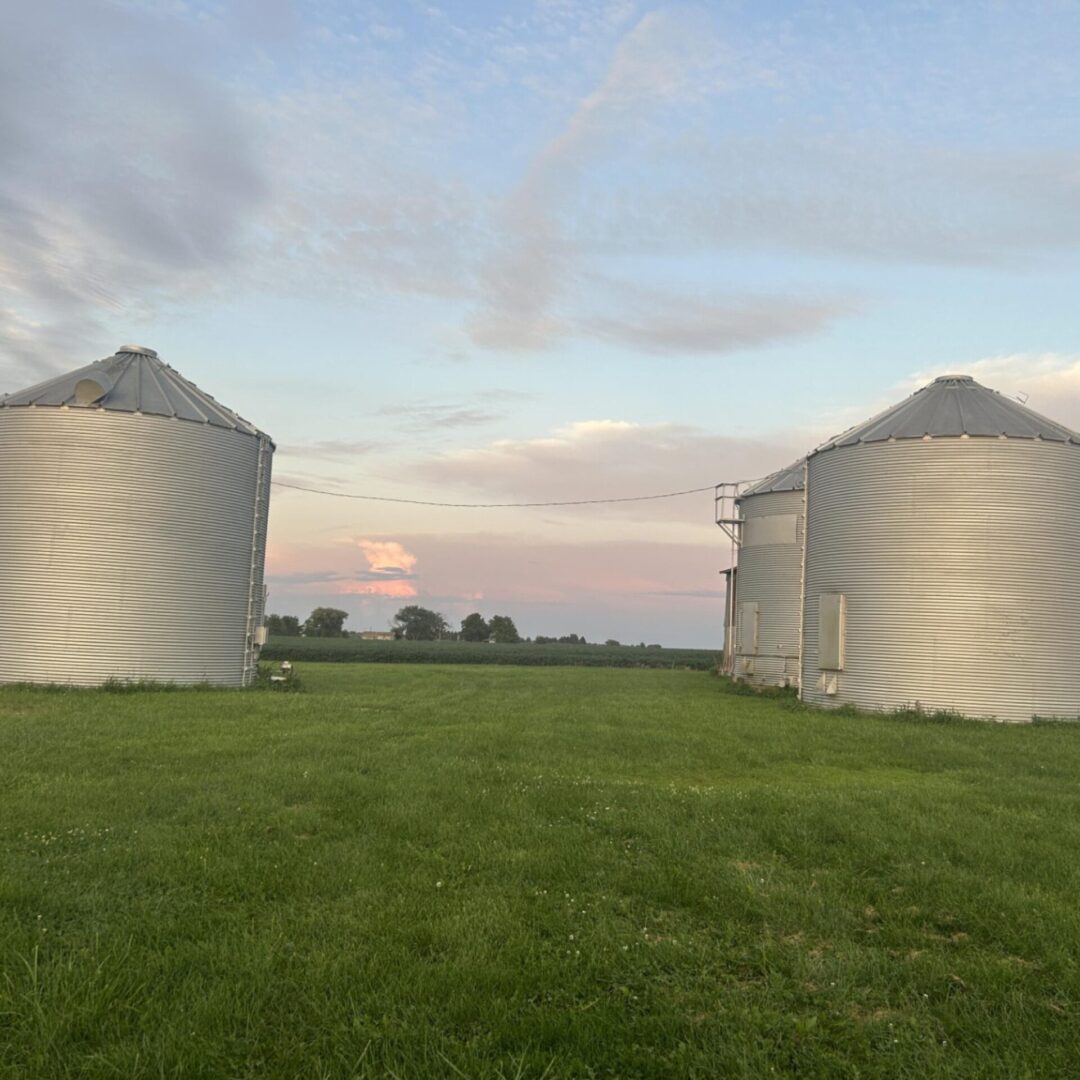U.S. Senate Democratic Whip Dick Durbin (D-IL), a member of the Senate Appropriations Committee, and U.S. Senator Tammy Duckworth (D-IL) announced that the Senate passed a funding bill for Military Construction and Veterans Affairs, as well as for Agriculture, Rural Development, and FDA for Fiscal Year 2026 (FY26). Durbin and Duckworth worked to secure various priorities for Illinois in the appropriations bills, both through Congressionally Directed Spending requests and through the programmatic appropriations process.
“In a strong show of bipartisanship, the Senate has passed several appropriations bills that will support our nation’s military readiness while caring for our veterans and will fund the programs that our rural communities rely on,” Durbin said. “The appropriations process is far from over, but I hope that the Senate can continue to work on a bipartisan basis to fund critical programs that help Illinoisans thrive.”
“Our state and our nation are stronger when we invest in our communities and families—and that’s what these bipartisan funding bills do,” Duckworth said. “Appropriating federal funding is the primary role of Congress, and it’s critical this responsibility remains in the legislative branch. I’m proud we were able to come together and pass these bills in a bipartisan manner, and I urge my Republican colleagues to continue working with Democrats to pass the remaining funding bills.”
The two funding bills include the following Illinois priorities secured by Congressionally Directed Spending requests:
Military Construction and Veterans Affairs
- Forging Equipment Annex, Rock Island, Illinois. $5 million to house the expanding forging capability at Rock Island Arsenal-Joint Manufacturing and Technology Center consistent with Department of Defense safety and building standards.
- Marseilles Range Control, Marseilles, Illinois. $3.05 million to renovate and modernize an existing operations and maintenance facility for the Illinois Army Guard.
- National Guard Readiness Center, Peoria, Illinois. $8 million for a new readiness center facility for the Illinois Army Guard. In addition, the State of Illinois has committed to providing funding for this project as part of a cost-share effort, reducing the overall financial burden on the federal government.
- New Weapons Quality Assurance/Calibration Facility, Rock Island, Illinois. $4.25 million for a new building for the Rock Island Arsenal-Joint Manufacturing and Technology Center.
Agriculture, Rural Development, and FDA
- Health Clinic, LaHarpe. $1.38 million to Memorial Hospital Association to help construct an additional health clinic to expand access to health care in the Western Illinois community.
- Hospital Infrastructure Improvements, Watseka, Illinois. $645,000 to the Iroquois Memorial Hospital and Resident Home to update aged and outdated facilities, including HVAC systems and flooring.
- Intergenerational Center, Fairbury, Illinois. $1 million to the Boys and Girls Club of Livingston County to construct an intergenerational community center to provide programming and services to youth and seniors at the same site.
- Laboratory Renovation, Pittsfield, Illinois. $1 million to the Blessing Care Corporation to update the laboratory department at Illini Community Hospital in order to modernize facilities that are more than 80 years old.
- Medical Technology Upgrades, Lawrenceville, Illinois. $450,000 to provide essential technological upgrades at Lawrence County Memorial Hospital, including improvements in diagnostic imaging, patient monitoring systems, and life-saving equipment.
- Pre-K Expansion, Herrin. $263,000 to Herrin Community Unit School District No. 4 to help expand capacity at the district’s pre-K center.
- Rural Health Clinic Expansion, West Frankfort, Illinois. $1 million to Southern Illinois Hospital Services to expand the Miners Memorial Rural Health Clinic to provide improvements in both patient rooms and provider workspace.
- Teledentistry Initiative, Mattoon, Illinois. $110,000 to Sarah Bush Lincoln Health Center to expand rural telehealth efforts to include teledentistry with an emphasis on underserved children.
The two funding bills include additional Illinois priorities secured through the programmatic appropriations process:
Military Construction and Veterans Affairs
Department of Veterans Affairs
- VA Medical and Prosthetic Research. $943 million to support ongoing and new research in areas such as toxic exposures, traumatic brain injury, and precision oncology. It also directs the VA to report to Congress on any clinical trials paused or terminated under the Administration’s gutting of research efforts across government.
- Caregivers Program. $3.5 billion to expand training, benefits, and services for caregivers.
- State Veterans Homes Construction Grants. $171 million to provide state veterans homes, including those in Illinois, with resources for renovations and new construction.
- Women Veterans Health. $1.4 billion to advance, promote, and provide specialized care for the health of a growing number of women veterans.
- Information Technology. $5.9 billion for the VA’s IT systems, to include operations, maintenance, salaries, and other related expenses.
- Lovell. Includes continued support for the operation of the Joint DoD-VA Medical Facility the Lovell Federal Health Care Center.
- Smoke-Free VA. Includes report language supporting VHA’s prohibition on smoking modeled on Durbin’s Smoke-Free VA bill.
- Blood Testing for Retired Military Firefights. Includes report language supporting continued screening, care, and compensation, to include blood testing, for veterans impacted by PFAS exposure during their services, including military firefighters.
- Lethal Means Safety and Suicide Prevention. Includes report language directing the VA to expand suicide prevention efforts related to safety and storage of firearms.
- Produce Prescription. Includes report language promoting the VA’s use of “produce prescription,” to improve veterans’ health outcomes by increasing access to healthy, affordable food.
Agriculture, Rural Development, and FDA
USDA
- Bee Genome. $3 million, an increase of $750,000 from FY25, to continue sequencing the genome of more than 4,000 domestic bee species, including activities underway at the Peoria USDA National Center for Agricultural Utilization Research and the University of Illinois.
- Midwest Soybean Germplasm Lab. The President’s Budget Request proposes closing research labs in three states, including two operations at the University of Illinois—the National Soybean Germplasm Collection and the Maize Genetics Cooperation Stock Center. The bill includes language to prohibit USDA laboratory and facility closures without USDA providing Congressional notification and approval.
- Agricultural Research. $3.2 billion for basic food and agricultural research nationwide, including activities underway at the Peoria USDA National Center for Agricultural Utilization Research and the University of Illinois.
- Tracking Farm Exports by State. Includes report language requiring USDA to track and publish the top five farm commodities exported, or imported, by State, and the country of destination, or origin.
- Plant Health, Tree and Wood Pests. $59 million to help identify and contain wood-boring pests threatening tree health across the country, 19 of which have been detected in the past decade, including the Emerald Ash Borer. This funding will allow for the identification and containment of Emerald Ash Borer infestations and increase public awareness of the threat posed by EAB in the 15 states that are battling this invasive species.
- Animal Welfare. $27 million to implement and enforce provisions of the Animal Welfare Act (AWA), including those governing facilities that previously have fallen out of compliance with the AWA.
- Rural e-Connectivity Pilot Program (ReConnect Program). $35 million to support loans and grants that facilitate broadband deployment in rural areas without sufficient broadband access.
- Agricultural Extension – Food Safety Outreach Program. $10 million to provide food safety training and tech assistance to owners and operators of small farms, small food processors, and small fruit and vegetable vendors affected by the Food Safety Modernization Act of 2011.
- Food for Peace. $1.5 billion to meet emergency food needs around the world, including due to the wars in Ukraine, Gaza, and Sudan, and conflict, displacement, poverty, and climate change exacerbating needs around the world, despite Trump’s efforts to eliminate the program.
- McGovern-Dole International Food for Education and Child Nutrition Program. $240 million to support school feeding and maternal and child nutrition projects around the world, particularly for girls, despite Trump’s efforts to eliminate the program.
- Local and Regional Procurement. Continues support for the promotion of locally sourced agricultural products, which remain less costly and more accessible when compared to commodities sourced from the United States and shipped overseas.
FDA
- Tobacco. Includes substantial bill language pertaining to FDA’s Tobacco Center to eliminate harmful provisions and ensure alignment with public health needs. The statutory language specifies $200 million for e-cigarette enforcement activities, out of the $712 million total for the FDA’s Tobacco Center—which will increase resources to investigate and stop illegally sold products. The language also enhances reporting to Congress, dedicates $2 million to the interagency task force between FDA, DOJ, and DHS, and provides statutory authority requested by FDA Commissioner Makary to enable FDA to detain and destroy seized illegal e-cigarettes at ports of entry. There also is report language ensuring that the FDA’s regulatory focus is on kid-friendly and flavored products, and balanced between unauthorized Chinese vapes and also-illegal, unauthorized domestic vapes (made by Altria, RJ Reynolds, JUUL).
- ALS. Provides no less than $2.5 million for FDA to continue implementation ofthe ACT for ALS law to enable FDA to fund early stage clinical trials for new ALS therapies.
- Food Safety. $1.17 billion for FDA’s Human Foods Program to oversee food and nutrition in the United States. Includes report language encouraging coordination between FDA, USDA, and CDC in better ensuring the safety of our nation’s foods.
- Dietary Supplements. Includes report language calling on FDA to strengthen its enforcement actions against adulterated and misbranded dietary supplements.
***Courtesy of the United States Senate***














